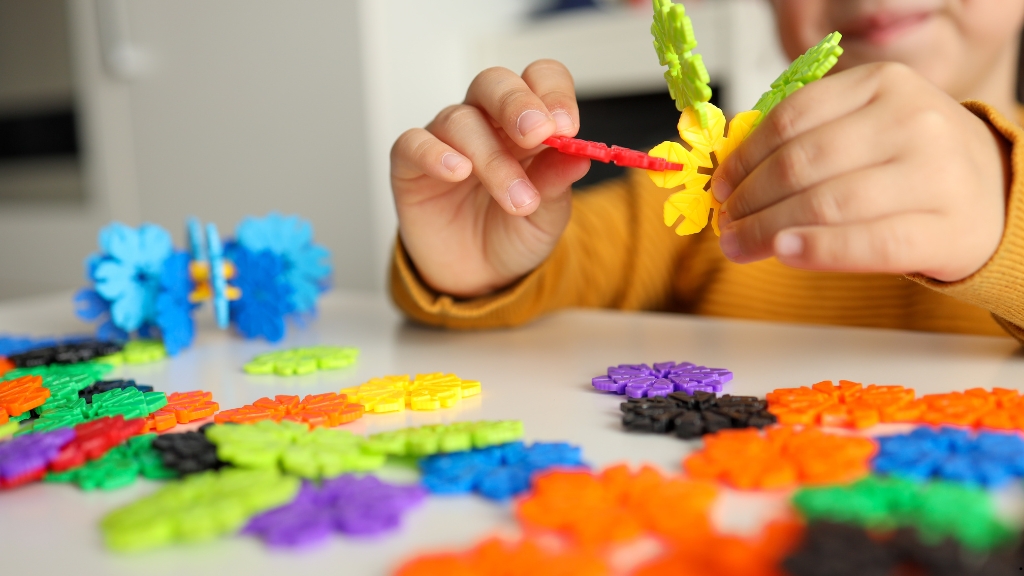How DIY Projects Build Confidence in Kids: Empowering Creativity and Skills

Every parent wants their child to grow up confident and capable. One of the most effective ways I've found to nurture that confidence is through DIY projects. When kids take on hands-on tasks, they not only learn new skills but also discover the joy of creating something from scratch. Each completed project serves as a tangible reminder of their abilities, boosting their self-esteem and encouraging them to tackle new challenges.
Engaging in DIY activities fosters problem-solving skills and creativity, essential components of self-assurance. As kids navigate through trial and error, they learn resilience and the importance of perseverance. In this article, I’ll explore how these projects can transform not just a child's skill set but their overall confidence, setting them up for success in all areas of life.
Understanding DIY Projects
DIY projects encompass a wide range of hands-on activities where individuals create or build something independently. Engaging in these projects allows kids to explore their creativity while developing essential skills.
Definition of DIY Projects
DIY stands for "do it yourself." DIY projects involve creating or assembling items without professional assistance. These projects can be as simple as crafting with paper and glue or as complex as building furniture. Common examples include:
Crafts: Projects using materials like paper, fabric, and beads.
Home Improvement: Activities such as painting a room or putting up shelves.
Gardening: Engaging with nature by planting flowers or vegetables.
Upcycling: Transforming old items into new, functional creations.
Importance of DIY for Kids
DIY projects play a crucial role in child development. They promote hands-on learning and provide various benefits, including:
Skill Acquisition: Kids learn practical skills, like measuring, cutting, or painting, that are essential for various tasks.
Creativity Enhancement: DIY challenges stimulate imaginative thinking, allowing kids to explore unique solutions.
Problem-Solving: Kids face obstacles during projects, fostering critical thinking and resourcefulness.
Independence: Completing DIY tasks helps kids gain self-reliance and confidence in their abilities.
Teamwork: Group projects encourage collaboration and communication among peers, teaching social skills.
Emphasizing these aspects ensures that DIY projects effectively build confidence and contribute to a child's overall development.
Benefits of DIY Projects
DIY projects offer numerous benefits that significantly contribute to a child's overall development. Engaging in these activities nurtures essential skills while boosting confidence and self-esteem.
Enhancing Creativity
Engaging in DIY projects stimulates a child's imagination. From designing crafts to building unique structures, creativity flourishes as kids explore various materials and techniques. This hands-on approach encourages experimentation, enabling children to express their thoughts and feelings through their creations. As they navigate artistic challenges, they learn to view obstacles as opportunities for innovation, fostering a lifelong appreciation for creativity.
Developing Problem-Solving Skills
DIY projects inherently involve problem-solving. Kids encounter challenges that require them to analyze situations, brainstorm solutions, and implement those solutions effectively. For example, figuring out how to create a sturdy structure from limited supplies teaches critical thinking. This practical application of problem-solving translates to everyday situations, boosting resilience and adaptability. With each completed project, children gain confidence in their decision-making abilities, laying a solid foundation for future challenges.
The Connection Between DIY and Confidence
DIY projects significantly enhance children's confidence by promoting self-reliance and critical thinking. Hands-on tasks empower kids, fostering a sense of achievement as they navigate challenges independently.
Building Independence
Engaging in DIY projects instills independence in children. When kids follow through on a project from start to finish, they take ownership of their work. Completing tasks empowers them to trust their abilities and judgment. They learn to set goals, manage their time, and problem-solve when unexpected issues arise. This autonomy boosts their confidence, enabling them to face new challenges with a positive mindset.
Learning Through Mistakes
Mistakes play a crucial role in the DIY experience. When children encounter setbacks, they learn resilience and adaptability. Each error becomes a learning opportunity, reinforcing the idea that failure is part of the creative process. By analyzing what went wrong, kids develop critical thinking skills and become more proficient in their chosen tasks. This learning through mistakes builds confidence, as they understand that effort and perseverance lead to improvement and success.
Examples of Effective DIY Projects for Kids
Engaging kids in DIY projects fosters skills and confidence. Below are effective project examples tailored for different age groups.
Simple Projects for Young Children
Paper Plate Masks: Kids decorate paper plates with paints, markers, and fabric scraps to create fun animal or character masks. This project enhances creativity and allows for imaginative play.
Homemade Playdough: Combining flour, salt, water, and food coloring, children can create their own playdough. Measuring ingredients promotes basic math skills while they enjoy molding shapes.
Garden Planting: Kids can plant seeds in small pots or a garden bed. This hands-on activity teaches responsibility as they learn to care for living things, observing growth patterns over time.
Friendship Bracelets: Using colorful thread or beads, kids can craft simple friendship bracelets. This enhances fine motor skills and provides a sense of accomplishment when giving their creations to friends.
DIY Bird Feeders: With pine cones, peanut butter, and birdseed, kids create bird feeders that can be hung outside. This project encourages a connection with nature and responsibility for the local ecosystem.
Challenging Projects for Older Kids
Wooden Birdhouses: Older kids can construct birdhouses using pre-cut wood pieces, screws, and paint. This project develops basic woodworking skills and teaches children about different bird species.
Personalized T-Shirts: Using tie-dye kits or fabric paint, kids can design their own T-shirts. This creative outlet fosters self-expression while teaching them about color combinations and patterns.
DIY Terrariums: Kids can create terrariums using glass containers, soil, and small plants. This project involves planning and understanding ecosystems, providing a rewarding sense of responsibility.
Upcycled Furniture: Older kids can sand and paint old furniture to give it new life. This project encourages creativity and resourcefulness while teaching about sustainability and design.
Robot Building Kits: Engaging with robotics through kits that require assembly and programming, kids learn about technology and engineering. This project enhances critical thinking and problem-solving skills.
Encouraging Kids to Engage in DIY
Creating an environment that promotes DIY engagement fosters confidence and independence in children. When kids feel supported, their willingness to try new projects and explore their creativity increases.
Creating a Supportive Environment
Establishing a supportive environment encourages kids to take initiative in DIY projects. Kids thrive when they sense encouragement, so I make sure to celebrate their efforts, regardless of the outcome. Creating a dedicated space for projects, filled with supplies and tools, enhances their sense of ownership. Allowing children to choose their projects promotes autonomy, making them more invested in the process. Encouragement from family members during project completion reinforces their resilience, fostering a positive feedback loop that enhances their confidence.
Providing Necessary Resources
Providing the right resources empowers kids to tackle DIY projects confidently. I ensure access to a variety of materials, tools, and instructional resources. Offering diverse supplies, such as crafting materials, gardening tools, and upcycling items, caters to different interests. Age-appropriate guides, online tutorials, or craft books help them learn new techniques. Ensuring that resources are readily available minimizes frustration and encourages exploration, allowing children to focus on creativity and development.
Conclusion
DIY projects are more than just fun activities for kids; they’re powerful tools for building confidence. I’ve seen firsthand how these hands-on experiences empower children to trust their abilities and embrace challenges. Each completed project not only enhances their skills but also nurtures a sense of accomplishment.
By encouraging kids to tackle DIY tasks, we’re giving them the opportunity to learn resilience and creativity. It's inspiring to watch them grow through trial and error, turning setbacks into stepping stones for success. Creating a supportive environment further amplifies this growth, allowing children to explore their interests freely.
Ultimately, engaging in DIY projects helps kids develop a strong foundation for future challenges. It’s rewarding to know that the confidence they gain today will serve them well in all aspects of their lives tomorrow.


